ARABIAN NIGHTS
Design Process Notes
Theatre Fairfield
director: Jesse Jou
sets: Chien-Yu Peng
lights: Lynne Chase
costumes: Julie Leavitt
sound and original music: Chad Raines
Dangerous Sunrise
The design process included some work on developing the look for the multiple morning scenes in Shahryar's room. Director Jesse Jou described these mornings, when Scheherezade's life is threatened, as "the most dangerous time."
I began work on this look even before the set was designed. In meetings we had discussed the idea of using our black box space as a thrust. We had looked at a research image showing the shadow of a man at prayer projected on a column. With this information, I drew a generic thrust in our space and included a generic surface to receive shadows. The first series of drawings show experiments with differing combinations of actors and lights. (I couldn't resist having a little fun and inserting an audience member sound asleep in the front row, with his feet onstage. In the final image in this series, his feet become part of the shadow composition.)
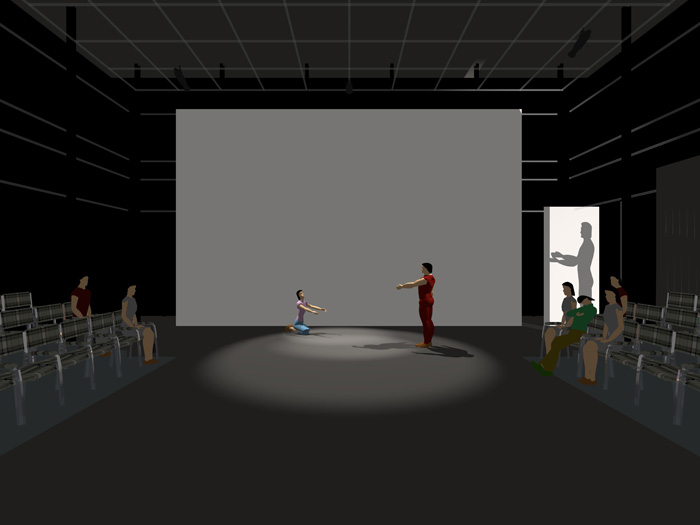
In this thought, the Wazir, holding Scheherezade's shroud (cloth not drawn, but his arms are extended as though holding it) is behind masking stage left so the audience only sees his shadow. Shahryar, in red, threatens Scheherezade with a gun (weapon not drawn.) Scheherezade begs for her life. The costumes drawn in these sketches are NOT representative of the actual costumes for the show. They are what was easy to draw with this program. I was concerned with the light, rather than deciphering the Vectorworks functions for drawing clothing.
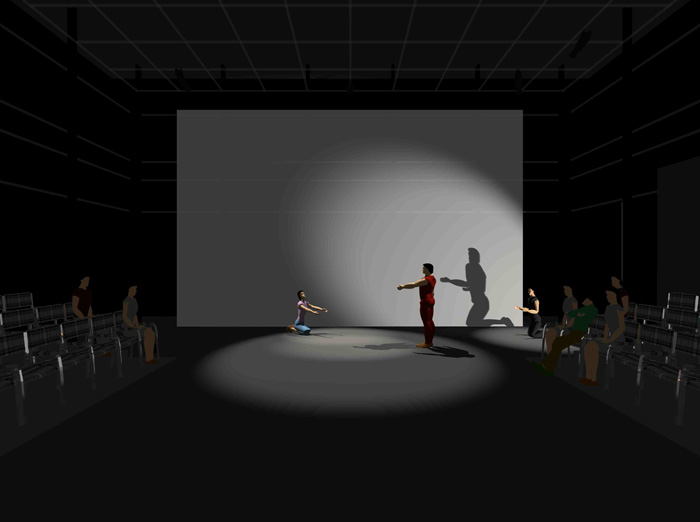
Here, the Wazir, in black, is kneeling on stage, so the audience sees both man and shadow.

In this idea, the Wazir is behind the upstage screen, so again, we see only his shadow.
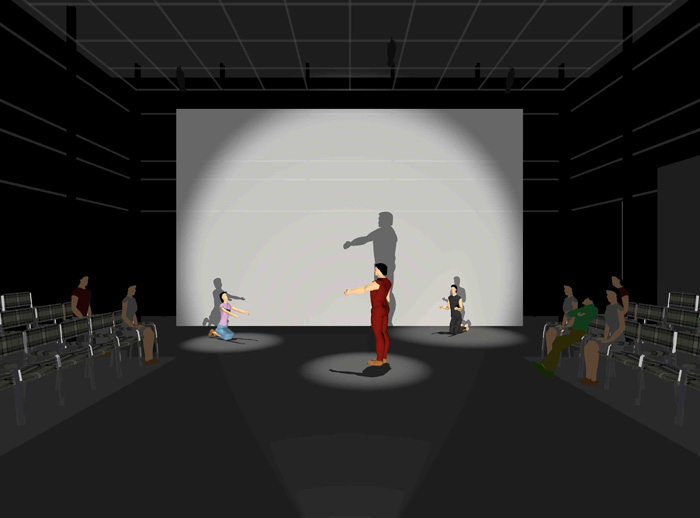
In this variation, a single light on the floor down center throws all shadows upstage onto the large screen.
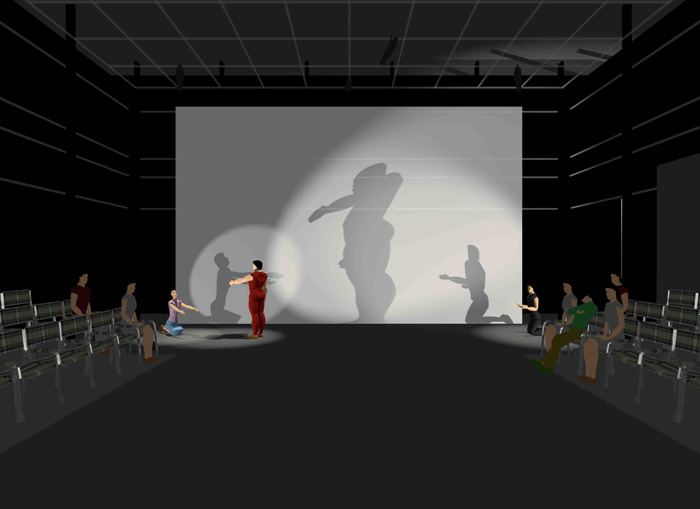
A threesome of shadows thrown using instruments on the floor just upstage of the seating sections.
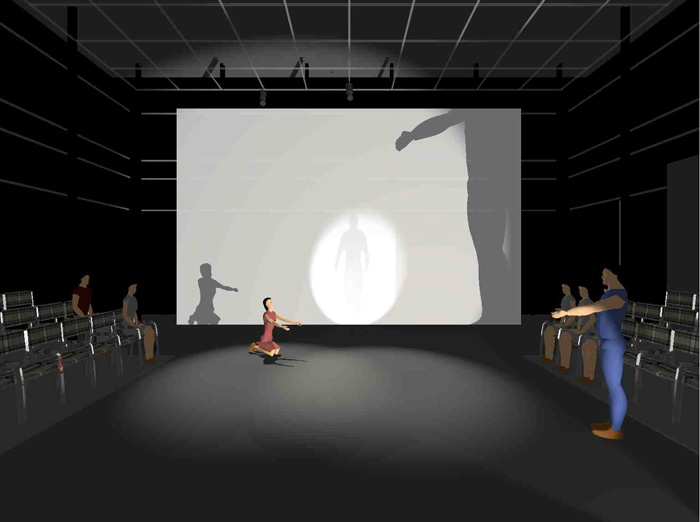
In this idea, from earlier in the development process, Shahryar, in blue, is downstage, being lit by an instrument on the floor so that the gun (not drawn) would make a large shadow on the screen. The Wazir is behind the screen.
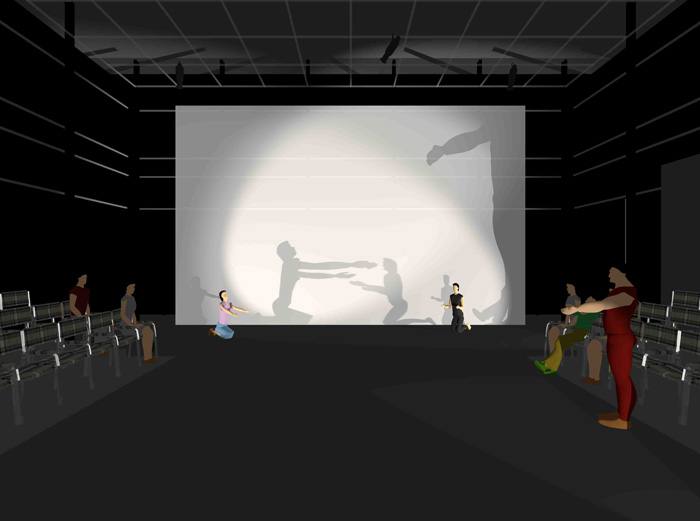
In this final thought, the Wazir and Scheherezade each make a shodow from units behind the seats, AND they also throw shadows from the unit on the floor down left. (Notice that the green sneakers of our sleeper also end up on the screen!)
We now had decided that we liked casting the Wazir shadow onto a vertical surface, but that other shadows should be cast "across" the space. I generated a series of light studies exploring this option, including some audience members in the rows between the viewer and the stage to illustrate the view of the floor from the rear seats. There are also included some images of the view from one of the side sections.
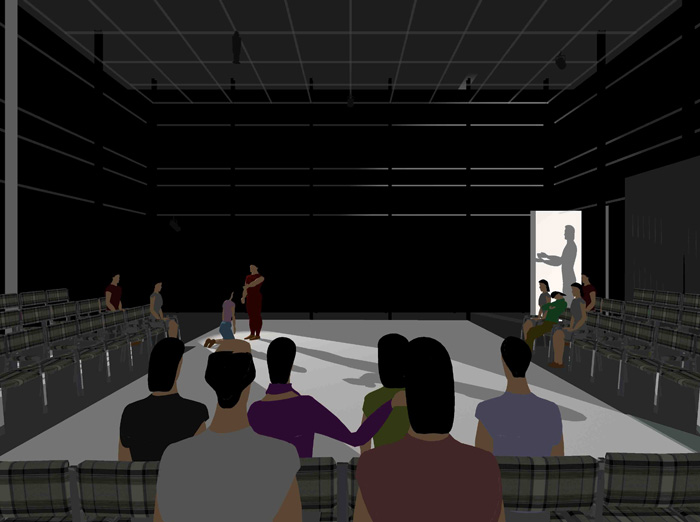
With the Wazir now behind masking, Scheherezade and Shahryar are lit from upstage to send their shadows diagonally along the stage floor. But the shadows will read only if there are almost no other lights on and if there are no audience heads in the way.
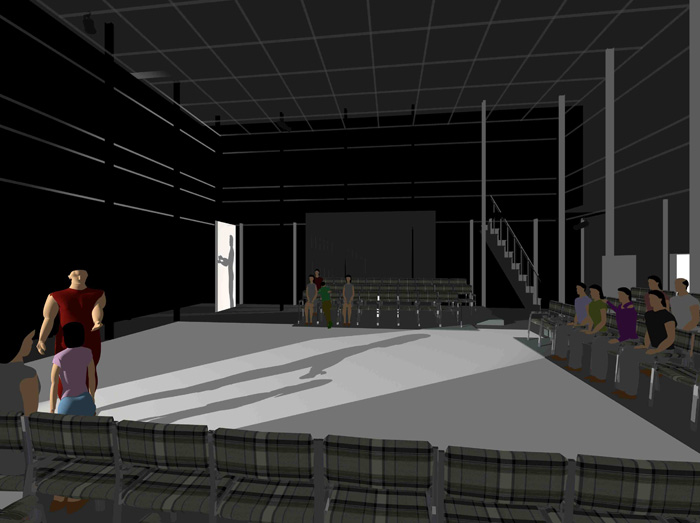
The view from the stage right side section. Lack of audience gives a clear view of the floor.
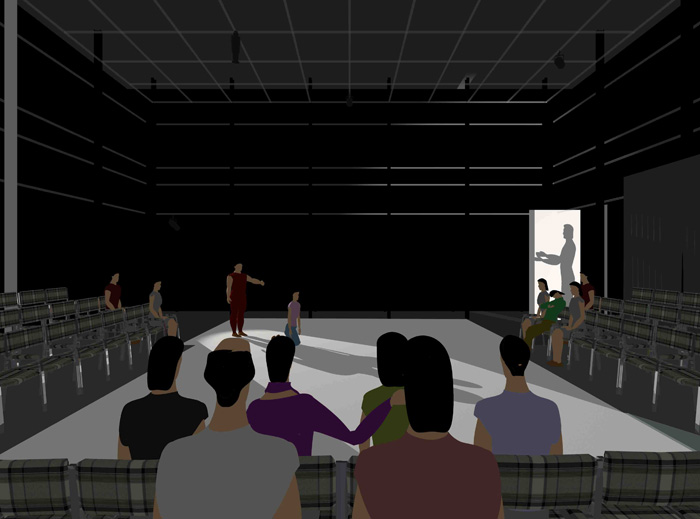
Back in the center section, but this time Scheherezade is in front of Shahryar.
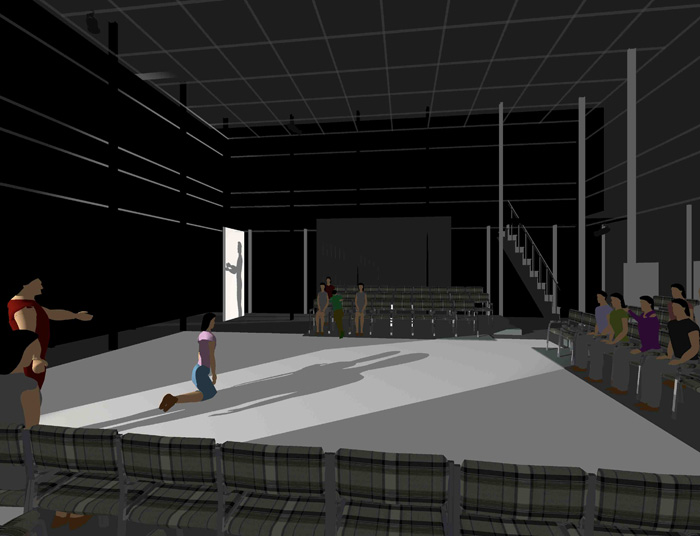
The unobstructed view from the side section shows that their shadows are less understandable in this configuration.
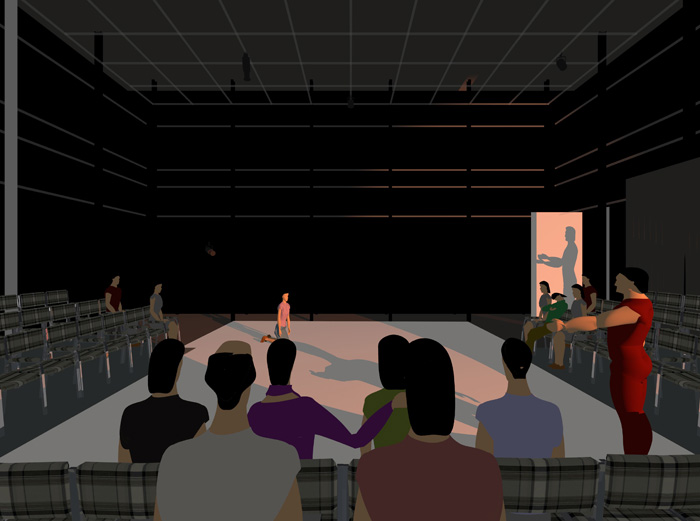
Shahryar downstage with a source suggesting hot morning sun.
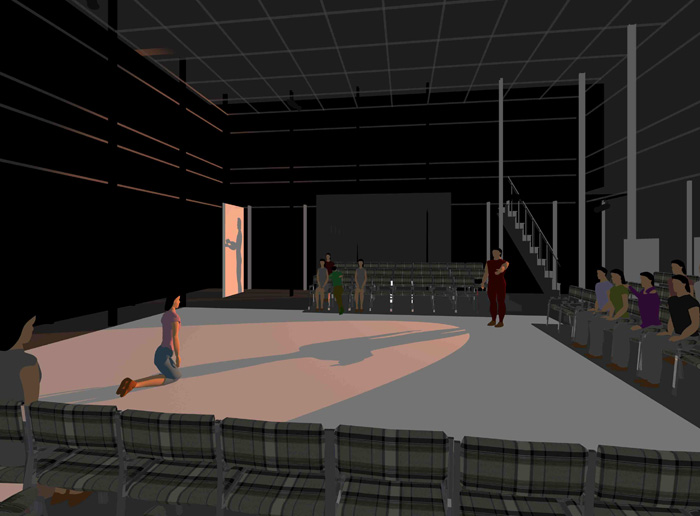
And the view from the side section.
We decided that we liked this newer arrangement. Scheherezade and Shahryar should be caught in a strongly directional light, like dawn breaking. The fact that their shadows would not be understandable, or even visible, was OK. For these two characters, it was about the light, rather than the shadow. By contrast, the Wazir was about his shadow although we did choose to put him onstage, in view of the audience.
By this point, the set was available. Designer Chien-Yu Peng had conceived of a sandy desert look with a large picture frame containing a city skyline and a "mini-city" on the catwalk mounted on corrugated metal. Yes, that is a ceiling! It was a wonderfully fun component of the design!

Scene design, model construction and photograph by Chien-Yu Peng. Used with permission.
Using a very generic representation of this set, I sketched some more specific lighting studies of our sunrise look for Shahryar's room. Jesse liked them. We would leave the decision about whether to have the Wazir stand or kneel for tech.
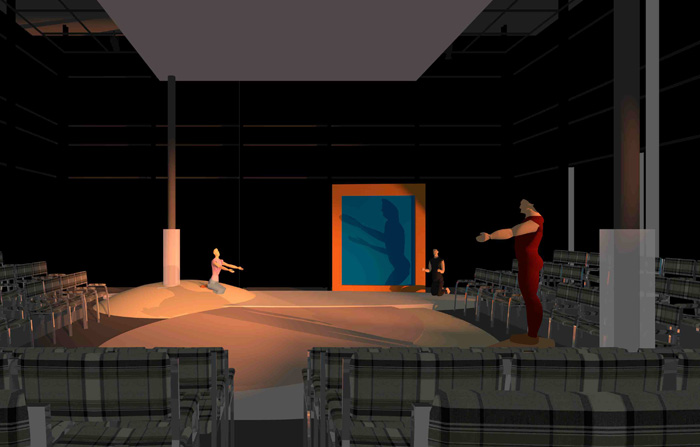

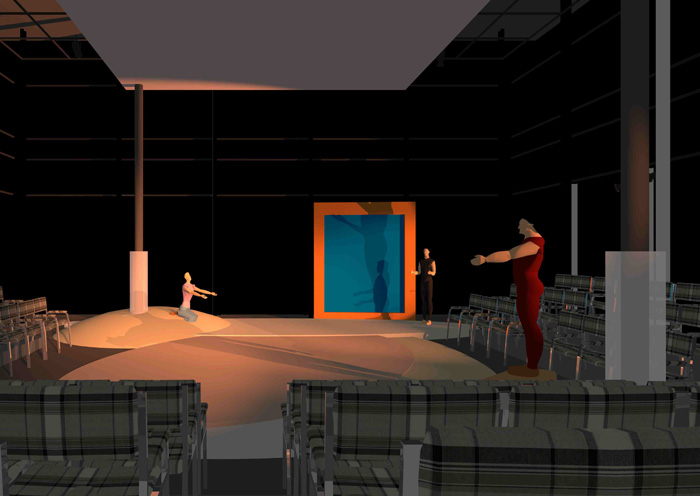
The finished look in performance
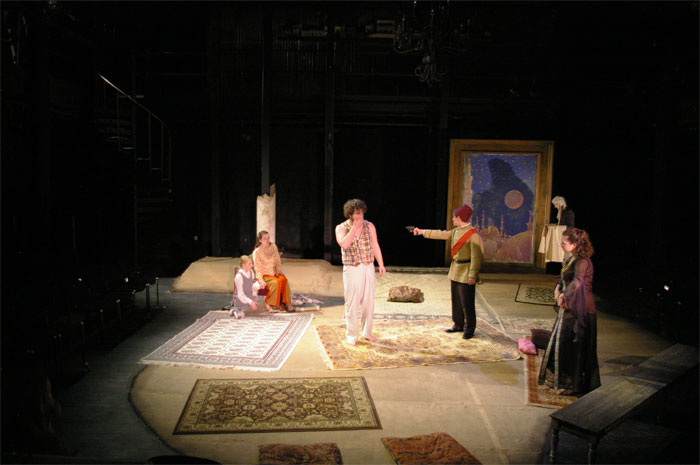
The Wazir stands on stage, throwing his shadow onto the framed picture. The other characters have a hot, directional morning sun on them, though shadows are muted because there are multiple sources in use.
The Shape of the Production
We return to the above look repeatedly during the show. All other scenes stand in contrast to this in some way. Originally, we were thinking that these contrasts would be accomplished mostly with color. In the end, I used a variety of methods to create fantasy worlds as the stories layered on top of each other.
Below are notes I used for the meet and greet.
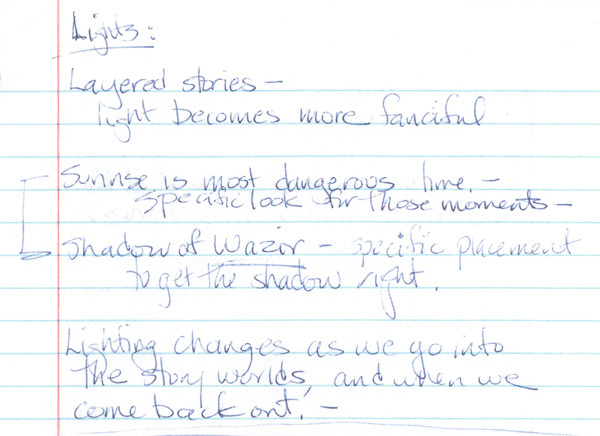
I told the company that the light would help delineate our movement from one story into another and that the story worlds would be fanciful. Shahryar's room would have a specific look and the actor playing the Wazir would need to pay specific attention to his positioning in order to get his shadow to land on the picture.
Out of a Story World and Into the Dangerous Sunrise
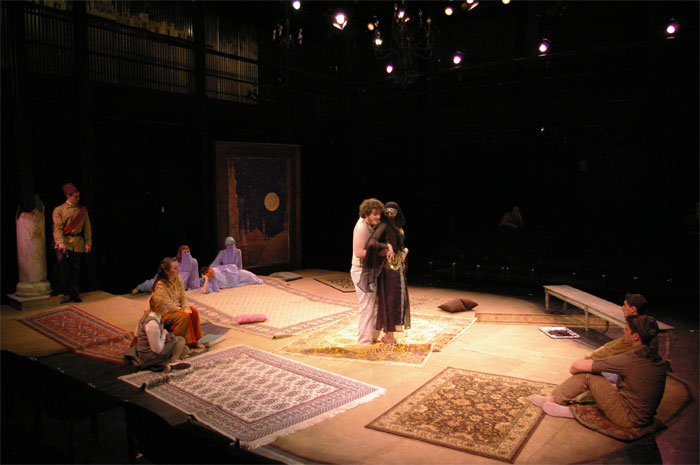
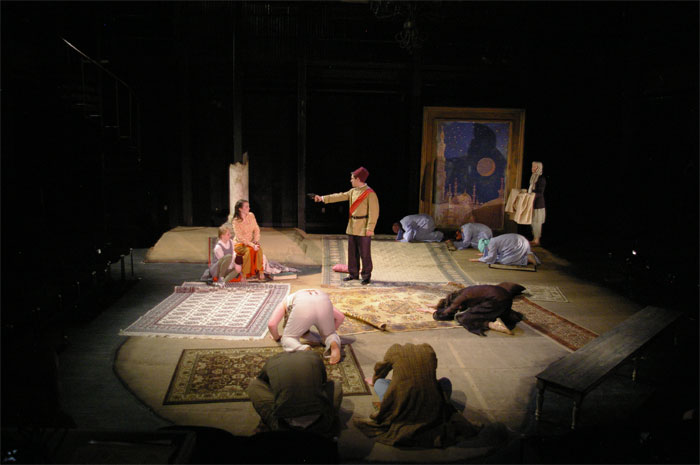
The Perfect Love scene, (left) contrasts with the Shahryar room look. While both have a pink tone, the Perfect Love color is more sensuous and hot, while the dangerous sunrise (right) has a chillier color and a flatter angle. (As seen from the center section.)
Stories Nested Within a Story

Here we are back in Shahryar's room with our signature "dangerous sunrise" look.
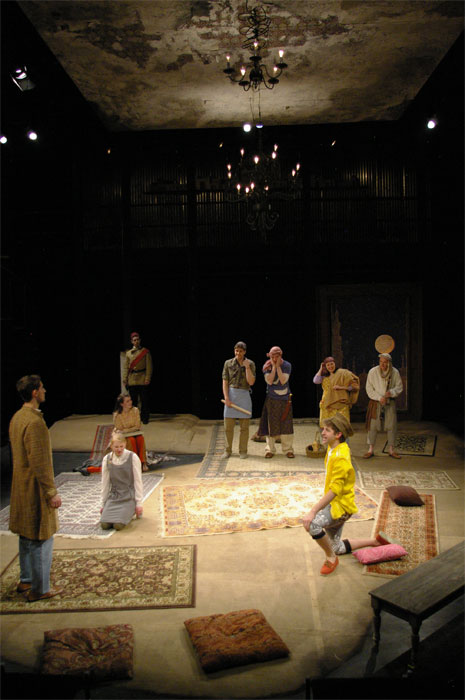
We've now entered the story world of Harun Al-Rashid's Palace, with understated elegance and regal size. The ceiling is lit as are the chandeliers.
Interestingly, this contrasts with the "dangerous sunrise" by using less color rather than more. That seemed to be a stronger way to establish the elegance of Harun's environment.

The Man in the Dream tells of a fortune in Cairo. This is the Pastrycook's tale told to Harun al-Rashid and has a mysterious blue nighttime look.
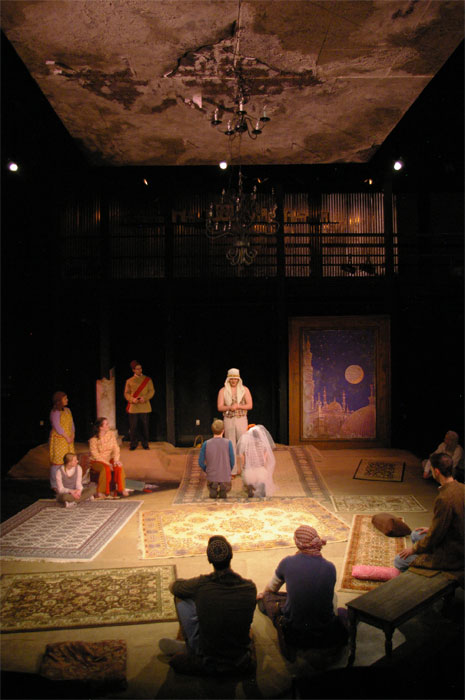
Boy and Girl at Sheikh's Palace in the butcher's story of "The Contest of Genrerosity." The warmth washing the ceiling helps to give this home an expansive elegance while keeping it unique, and differentiates it from both Harun's Palace and the "dangerous sun" look.
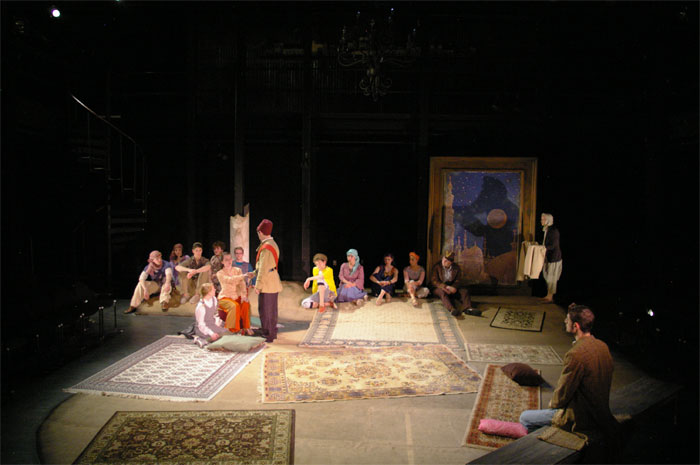
The story light has melted away and we are back in the "dangerous sun" look of Shahryar's room.
Another Journey Into a Story
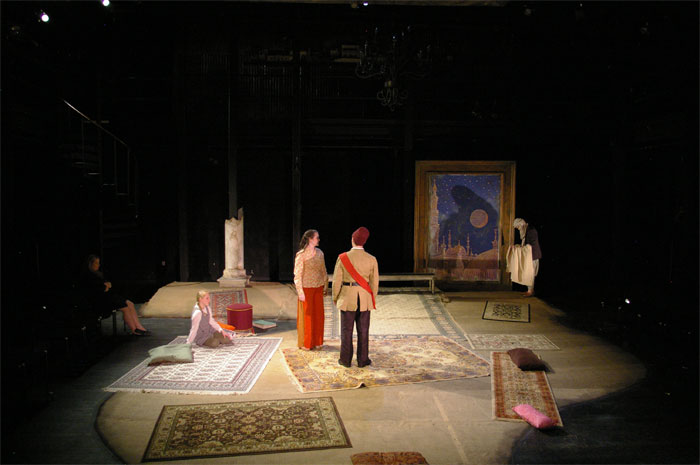
We begin in Shahryar's room with our signature "dangerous sunrise" look. The Wazir is now bowing his head in sadness. What will become of his daughter?
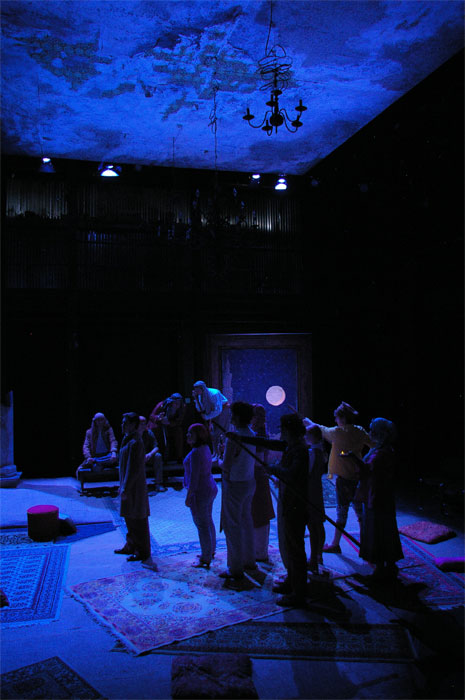
Blue night in the story world of
the night Harun al-Rashid met himself on the water.

The Mock Khalifah Palace is
dazzling, bright, magnificent and colorless.
For more details, see below in
A Tale of Two Palaces.
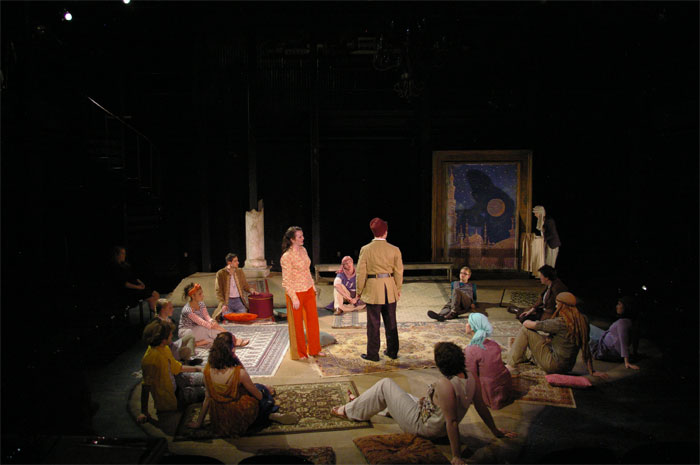
Back in Shahryar's room
A Tale of Two Palaces
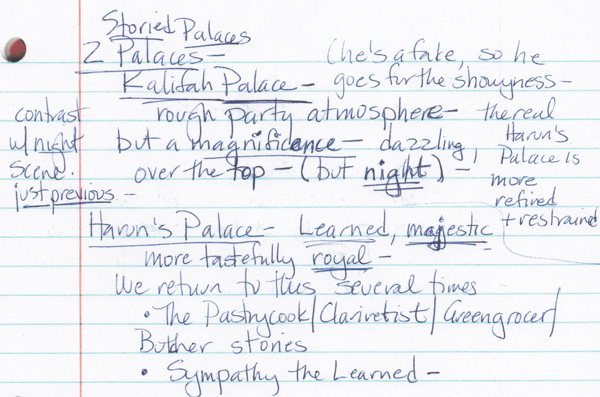
Rehearsal notes comparing the two palaces of Harun al-Rashid and the Mock Khalifah.

Harun al-Rashid palace

Mock Khalifah palace
Though these two palaces are lit in a similar way, the mock palace of the Mock Khalifah is more exaggerated and dazzling, in keeping with the artificial showiness of the man himself. The chandeliers are brighter along with the light on the ceiling. Because of the later, bounce from the ceiling cast a soft downlight over the entire room, giving the space a larger feeling and the palace a magnificence.
The Other Reality

Our signature "dangerous sunrise" moment in the show finale.
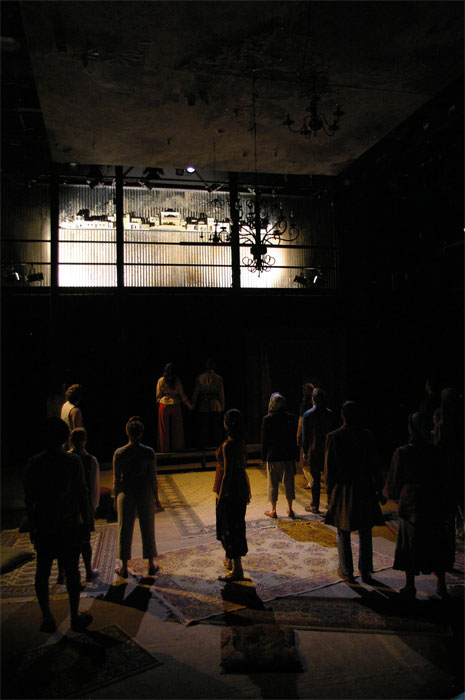
But, Shahryar's room is itself a story. At the end of the show, a bombing raid over Baghdad brings us into the actual reality.
For more show photos, and to more closely examine larger versions of these photos, visit the Arabian Nights gallery page.
Return to Process Homepage
